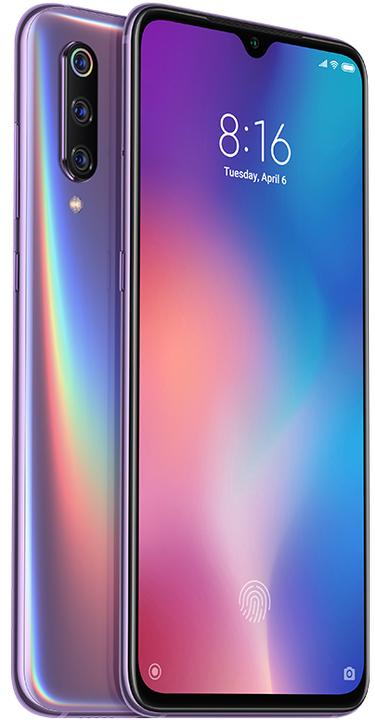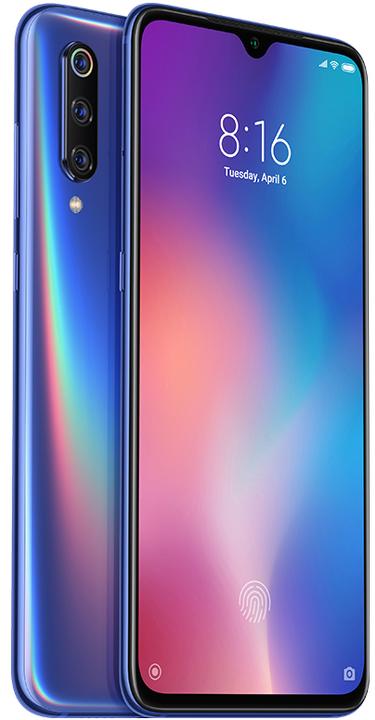

Xiaomi Mi 9 review: top smartphone with a night-challenged triple camera
The latest top hardware at half the price of the competition. If you had to sum up the Xiaomi Mi 9 in a sentence, that would be it. At this kind of price tag, the smartphone can be forgiven for not being perfect across the board and having a few drawbacks.
The Xiaomi Mi 9 boasts a big display, a fingerprint sensor hidden on the back, fast hardware and a triple camera with telephoto and wide-angle lens.
The triple camera likes it bright
While the Xiaomi Mi 9 Motive telephoto lens gets in closer, the wide-angle lens with its 117 degree viewing angle lets you fit more in the picture without having to take a step back. What’s even better is you don’t get the blurring around the edges typical of wide-angle shots. The software manages to even it out. That being said, the degree of detail drops slightly at the edges.



In contrast, photos taken with a traditional camera angle display a high degree of detail overall. That’s partly because information from the 48 megapixel image sensor is condensed into a 12 megapixel photo. You can select «48 megapixel» as the shooting mode on the camera app but when you compare it to the lower resolution on a big monitor you don’t gain any extra image quality.
In terms of colour, both the shots feature bold hues. And the software does a good job of evening out contrast. You don’t even need to turn on HDR mode any more. The only time it makes sense to use it is when there’s strong contre-jour. Another feature you won’t need to use is the artificial intelligence switch in the camera app. While AI does recognise subjects and situations well and tries to optimise settings, the results are hardly different from those you get in automatic mode.


When you use the telephoto lens at 12 megapixel resolution and the wide-angle lens with 16 megapixels, you have to be OK with a slight drop in quality. What’s most affected by this is colour rendering – both in terms of contrast and intensity. When it comes to the wide-angle lens, you also have to expect fewer details.
As for specialist shots, bokeh photos can only be taken with the main camera but when you do shoot them they look great. You can get the bokeh effect to work on photographs of people as well as objects. In both instances, the camera manages to make a clear distinction between the foreground and background.

But at night, the Xiaomi Mi 9 lags behind other top smartphones in terms of image quality. The Huawei P30 Pro, Samsung Galaxy S10 and Google Pixel 3a all shoot better pictures in the dark than the Mi 9. Its wide-angle camera stays black and the only bright points it recognises are the two street lights. The main camera captures much more light but doesn’t match up to the detail and brightness of its competitors. Ironically, the Mi 9’s night mode doesn’t yield better lit photos; they just end up being even more blurry.



The front camera takes selfies with 20 megapixel resolution. The shots are fine when it comes to detail depiction and colours but there are problems with stark contrast. The latter improves when you activate HDR but the photos still end up with a strong blue cast. Meanwhile, AI lets you take selfies on a blurred background using just one front camera. That being said, the bokeh mode is dependent on you separating yourself from the background with a clear contrast. That’s why it’s better to turn HDR on rather than letting the reflections on your bald head blend into the background.



Big display, great hardware
On the Xiaomi Mi 9, the 6.39-inch AMOLED display covers 90.7% of the front of the phone. The edges are slender but still clearly noticeable on all four sides. At the top there’s the notch or recess for the front camera. The phone’s 2340 x 1080 pixel resolution delivers sharp, detail-rich image quality. And the colours are strong yet natural. Thanks to the high brightness settings, you can also use the phone in the sun.

Fitted with the Snapdragon 855, the Xiaomi Mi 9 packs in Qualcomm’s most powerful chipset. You won’t get anything cheaper than the Mi 9. Even the OnePlus 7 would set you back much more. At 6 GB, the Xiaomi chip does admittedly provide less memory than its competitors but don’t let this fool you into thinking the handset is too weak. Whether you’re gaming or using it for AR and VR, there’s no buffering and loading times are nice and short. This phone is perfect for daily apps that aren’t too demanding on the hardware. The only time the competition have the upper hand with higher RAM is when you want to use the handset for exotic things such as sophisticated video editing projects.
In terms of internal memory, the Mi 9 comes with either 64 or 128 GB. As you can’t increase the memory with a microSD card at a later date, I’d recommend paying extra for the larger memory.
Android but different
The Xiaomi Mi 9 runs on Android 9 Pie but looks very different to other Android devices. This comes down to Xiaomi’s user interface, which is called MIUI. If you don’t like the design, you can always swap it for a launcher in the Play Store and uninstall the additional pre-installed apps with a few clicks. Just don’t do that with the universal remote controller. It’s actually very handy. There’s an infrared transmitter on the top of the Mi 9 that lets you control many devices remotely when combined with the app. Of course, it goes without saying that you have to set everything up first. I find it works smoothly when I want to remotely control my TV and hi-fi system.

What’s important is you make sure you keep the Mi 9 global version. This contains the Play Store and the usual pre-installed apps. By contrast, the Chinese version doesn’t have any Google connection and just has loads of pre-installed China apps. Aside from the fact you’d have to get to grips with the language just to use them, they don’t make much sense outside of the country.
Shiny design but not-so-glossy security
Xiaomi describes the back of the Mi 9 as boasting a «holographic glass design». It’s incredibly reflective and shiny and to be honest, I’m sick of the sight of it. I kind of wish there were more matt cases. That way fingerprints wouldn’t be quite so noticeable as they are on the Mi 9. While we’re on that subject, you can use your fingerprint to unlock the handset. The fingerprint sensor is under the display and is one of the fastest and most reliable of its kind.

Alternatively, you can use face recognition. It’s also fast and easy to use. That’ll be why the smartphone wanted to see my face briefly while I was setting up the device. Compared with infrared camera facial recognition – where your face is scrutinised for longer – this basic photo doesn’t fill me with confidence. I put it to the test and was met with a chilling result. I was able to unlock the Mi 9 using a selfie I had on my PC monitor.

If you use the Google Assistant a lot you’ll be pleased to hear the Xiaomi Mi 9 has an extra button on the left hand side to start the virtual assistant. I couldn’t work out how to allocate this button to something else. But if you don’t use it, it shouldn’t bother you as the power button and volume rocker are on the right hand side.
If you have a high-performance charging mat or case for wireless charging, the Mi 9 could outdo the competition. At 20 W, it’s ahead of most smartphones when it comes to wireless charging with Qi standard. The power supply that comes with it provides 27 W and charges up the battery in a jiffy thanks to fast charging technology. It’s not like you have to charge the 3,300 mAh battery overnight. Plugging it in for 30 minutes to an hour while you’re watching TV in the evening or in the morning while you’re having a shower, getting dressed and having your breakfast does the trick. You don’t even need to give it a boost during the day – only if you use the Mi 9 an awful lot.

Verdict: top smartphone with two drawbacks at an attractive price
Xiaomi has whipped up a compelling overall package with the Mi 9. You won’t get such high-quality tech for so little money from any other manufacturer. The display and inbuilt hardware are both excellent. Aesthetically, the software makes a change and the design is, as with anything, a matter of taste. However, if face recognition is a deal breaker for you and you aren’t satisfied with the fingerprint sensor, you’ll want to stay clear of the Mi 9.
As for the triple camera, it offers an array of photo opportunities and delivers great image quality to boot. But there is a big constraint: namely that when it’s dark the photo quality is way behind that of the more expensive competition.

When I was but a young student, I'd sit in my friend's living room with all my classmates and play on his SuperNES. Since then I've had the opportunity to test out all the newest technology for you. I've done reviews at Curved, Computer Bild and Netzwelt, and have now arrived at Galaxus.de.






